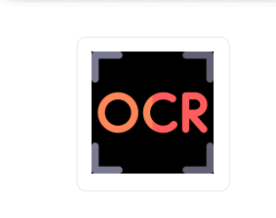Learn more about OCR technology and how it has benefited businesses worldwide by reading this article.
When optical character recognition technology first appeared in the 1970s, it was intended to help blind people learn. However, several businesses realized that this technology had enormous potential for transferring written information to computers. OCR technology gained popularity in the 1990s for digitizing old newspapers, and in the decades that followed, its methodology underwent significant advancements. reaching the present-day technologies that can provide OCR accuracy that is almost flawless.
This technology uses a traditional scanning procedure since it can swiftly digitize all kinds of files. Additionally, it has the ability to analyze handwritten or printed characters. OCR technology helps to save time that would otherwise be spent transferring many of these documents to programs like Word or Excel. As we said, this saves a significant amount of physical space in addition to saving time. Its scanning capabilities extend beyond just actual text documents; among other things, it can also digitize PDF files and pictures.
Utilizing this technology, businesses may operate more effectively. Consider how much time would be saved by not having to keep track of dozens or even hundreds of various meals, parking, restaurant, rail, and other ticket types. It provides for the electronic storage of various types of files, including bank checks, invoices, receipts, projects, contracts, payrolls, etc., making it a very powerful tool for all business sizes, even SMEs.
OCR technology is incorporated through interfaces into business procedures. Programming language APIs are an easy approach to incorporating this feature into work platforms or applications. The term “API” refers to a broad range of programming interfaces. They have aided in better time management and helped businesses advance by automating operations.
Optical Character Recognition: How Does It Work?
Technology for optical character recognition has advanced significantly over time. It can now quickly convert a huge number of photos to text and is extremely intelligent. The photos may come from a URL or a camera, among other options, depending on the process it is incorporated into. The text is first examined to determine its organizational structure, after which the sort of characters that must be transformed is determined.
Alphanumeric characters as well as special characters with specific languages or symbols are both recognized by these APIs. They work well for processing scanned documents, which is important for processing invoices, mortgage applications, personal data, etc. by financial institutions. There are many different APIs, so we advise you to try the Optical Character Recognition API, which can process several photos using just one URL.
More About Optical Character Recognition API
Optical Character Recognition API is what you need if you were looking for a technology that can quickly integrate and handle enormous amounts of data. This expensive API is fantastic. As long as the text is viewed horizontally, it can distinguish alphanumeric characters, special characters, and even handwriting.
The performance of this API is always being improved through the use of artificial intelligence. This is a result of its complex reclassification system. It enables you to group information into a number of pre-defined categories or to alter them to suit your requirements. Additionally, it supports the majority of programming languages, making it incredibly simple to get started. To quickly and efficiently retrieve information, try the Optical Character Recognition API.



